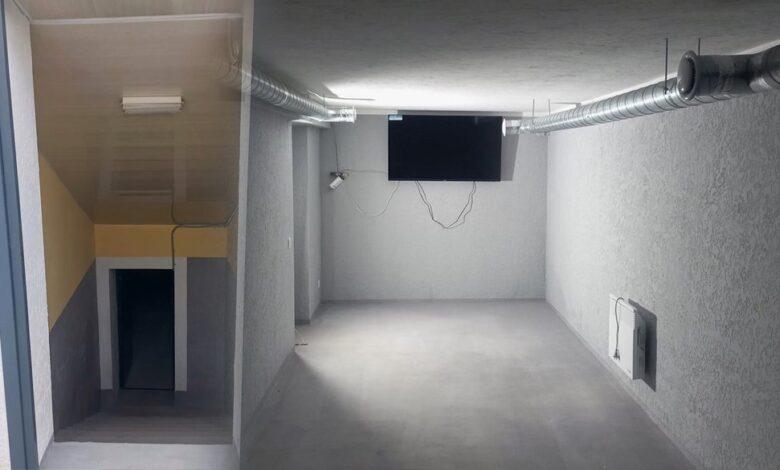Shelters were set up in educational institutions in the Chernihiv region with funds from German partners

The full-scale war in Ukraine sharply changed ordinary school life. For children of frontline and near-frontline regions, even the very fact of being in school has become associated with security issues. Chernihiv Oblast remains one of these regions, where schools are forced to set up shelters in parallel with the educational process to protect students and staff during air raids. Chernihiv region is a front-line territory that is in a constant risk zone. It is approximately 60-70 km from the Chernihiv border to Russia, 40-50 km to Belarus. The next stage of work on the security of educational institutions in the region was carried out thanks to the help of partners from Germany.
Blystiv educational complex
The federal state of Mecklenburg-Vorpommern provided funding within the framework of the signed joint declaration on cooperation with the Chernihiv Regional Military Administration. Thanks to these funds, shelters were equipped at once in several educational institutions in different communities of the region. In each case, the work was carried out taking into account the needs of specific educational institutions, the number of children and the real possibilities of the premises. About this informs Chernihiv OVA.
In the village of Blystova of the Novgorod-Siversk community, a full cycle of work on the construction of a shelter at the local educational complex was completed. Work started at the beginning of spring. The total cost of the project was about three million hryvnias.
The shelter is designed for the stay of 110 people. The premises were equipped in accordance with the current requirements: ventilation, electricity supply, a sanitary area, seating and lighting were arranged, which allows you to stay in an organized shelter for the necessary time during a threat.
Digtyariv educational complex
In Digtyarivka, which also belongs to the Novgorod-Siversk community, work started in April. Here, more than 1.3 million hryvnias were allocated to the arrangement of the shelter.
The work was carried out in a short period of time in order to have time to equip the premises before the active summer season. After the completion of the reconstruction, the shelter became suitable for operational sheltering of children during air threats, which is especially relevant given the increasing intensity of attacks in the border areas.
Avdiiv Lyceum of the Ponornytsk Community
The largest shelter in terms of capacity was set up in the Avdiiv lyceum of the Ponornytsk community. Here, the shelter can accommodate more than 200 children and employees of the institution at the same time.
The total amount of costs for the arrangement amounted to about 1.8 million hryvnias. The space is adapted for a long stay of a large group of children: basic sanitary conditions, autonomous lighting, ventilation and a first aid area are equipped.
Kindergartens in Kholmy and Koryukivka
In addition to schools, funds from German partners were also directed to shelters in two preschools — in the villages of Kholmy and Koryukivka. In these kindergartens, the work is not yet completed, but continues with the expectation that they will be completed before the new school year.
The need for shelters is especially acute in kindergartens, since children physically cannot quickly evacuate during an alarm without properly equipped safe rooms.
Arranging shelters became one of the main tasks for all Ukrainian schools in wartime conditions. Without such premises, most institutions do not receive permission to work on a regular basis. This situation is especially difficult for regions that are geographically located in zones of increased threats, such as Chernihiv Region, which borders the borders of the Russian Federation and Belarus.
The support of international partners in such cases makes it possible to provide a safe space for children of war, preserve the educational process and give schoolchildren a chance to remain in active education despite hostilities.





